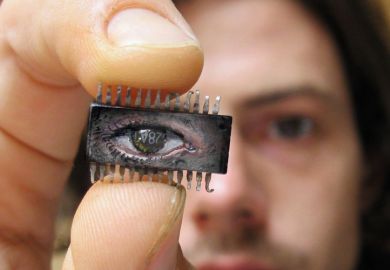Innovating Pedagogy 2015, a new report from The Open University and SRI International, identifies 10 trends that are likely to transform education in coming years. These are the trends, listed in an approximate order of immediacy and timescale to widespread implementation.
Crossover learning
Learning in informing settings, such as museums and clubs, that links educational content with issues that matter in learners’ lives. Learning in schools and universities can be enriched by experiences from everyday life, and informal learning can be deepened by questions and knowledge from the classroom.
Learning through argumentation
Mimicking the argumentation style of professional scientists and mathematicians to develop understanding of contrasting ideas, thus deepening learning, and to make technical reasoning public, for all to learn.
Incidental learning
Unplanned or unintentional learning that may occur while carrying out an activity that is seemingly unrelated to what is learned. This is not led by a teacher, and does not follow a curriculum or result in a qualification, but may trigger self-reflection that encourages learners to consider fragments of learning as a more coherent whole.
Context-based learning
Interpreting new information in the context of where and when it occurs, and relating it to what we already know, developing a better understanding of its relevance and meaning.
Computational thinking
Drawing on computational thinking skills to tackle complex problems, by breaking down large problems into smaller ones (decomposition), recognising how these relate to problems that have been solved in the past (pattern recognition), disregarding unimportant details (abstraction), identifying and developing the steps that need to be taken to reach a solution (algorithms), and refining these steps (debugging).
Learning by doing science with remote labs
Using remote-controlled robotic arms to control equipment in a laboratory, and cameras that provide views of the experiments being undertaken. Also includes remote use of telescopes to observe the night sky during daytime lessons.
Embodied learning
Using technology such as wearable sensors, cameras and mobile devices to track personal activity and thus to develop awareness of the role of movement, either to explore scientific phenomena such as friction or acceleration, or to help learners to “feel as they learn”.
Adaptive learning
Computer applications that use data about a learner’s previous activities to create a personalised path through educational content, recommending the best place to start and what needs to be reviewed, while providing tools to monitor progress.
Analytics of emotions
Tracking eye movements and facial expressions to monitor engagement, learning strategies and cognitive performance.
Stealth assessment
Automatic data collection that happens continuously in the background while students explore digital environments. Borrowing techniques from online role-playing games, this may be able to test hard-to-measure aspects of learning such as perseverance, creativity and strategic thinking.
Register to continue
Why register?
- Registration is free and only takes a moment
- Once registered, you can read 3 articles a month
- Sign up for our newsletter
Subscribe
Or subscribe for unlimited access to:
- Unlimited access to news, views, insights & reviews
- Digital editions
- Digital access to THE’s university and college rankings analysis
Already registered or a current subscriber?

